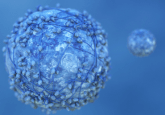Analysis of jumping genes uncovers new cancer immunotherapy targets

Researchers identify possible new antigens by studying jumping genes, which could be used to direct novel immunotherapies.
Immunotherapy is an effective approach to fighting tumors with multiple mutations; however, immunotherapies don’t typically work well in tumors with relatively few mutations. A research group led by Ting Wang at the Washington University School of Medicine in St. Louis (MO, USA) has found that jumping genes could produce antigens that are present in several cancers. Their findings could be used to direct immunotherapies to cancers that have previously been invisible to immunotherapies.
Jumping genes, also known as transposable elements, are short pieces of DNA that have been randomly incorporated into the human genome throughout evolution. Typically, jumping genes are located in parts of the genome that are inactive in adult tissues. Previously, Wang’s research group found that jumping genes can act as hidden ‘on’ switches that cause genes to be turned on all the time, driving cancer growth.
 What do octopus and human brains have in common?
What do octopus and human brains have in common?
The same jumping gene was identified in octopus brains as in human brains, which could explain these invertebrates’ impressive intelligence.
In this study, the research group performed a comprehensive screening of 33 tumor types obtained from the National Cancer Institute’s The Cancer Genome Atlas Program. In doing so, they identified 1068 transposable element-derived transcripts that could code for tumor antigens and, therefore, be used to distinguish tumor cells from normal cells. Whole-lysate and HLA-pulldown mass spectrometry confirmed that these possible antigens were on the surface of cells, making them ideal targets for novel immunotherapies.
The researchers found that almost 98% of the more than 10,000 tumors analyzed possessed at least one possible antigen target that was related to a transposable element, with most having between 2 and 75.
Many of the potential antigens identified were present in multiple tumors, and sometimes across tumor types. This has led the research group to consider the possibility of a universal antigen-based therapy that could treat many different tumors by targeting several common tumor antigens that are caused by these jumping genes.
“With this analysis, we can envision the design of a cancer vaccine that targets the top five or the top 10 most common tumor proteins caused by transposable elements,” commented Ting Wang, the study’s senior author. “This type of vaccine is still just an idea, but we are excited about the potential, because these common targets could cover a large fraction of tumors. Much more work is necessary, but we are hopeful that this analysis can serve as a starting point for the development of effective immunotherapies across many more cancer types.”





